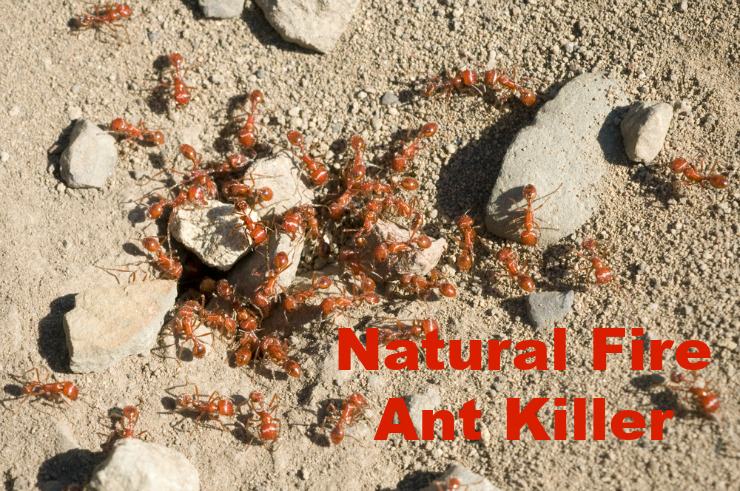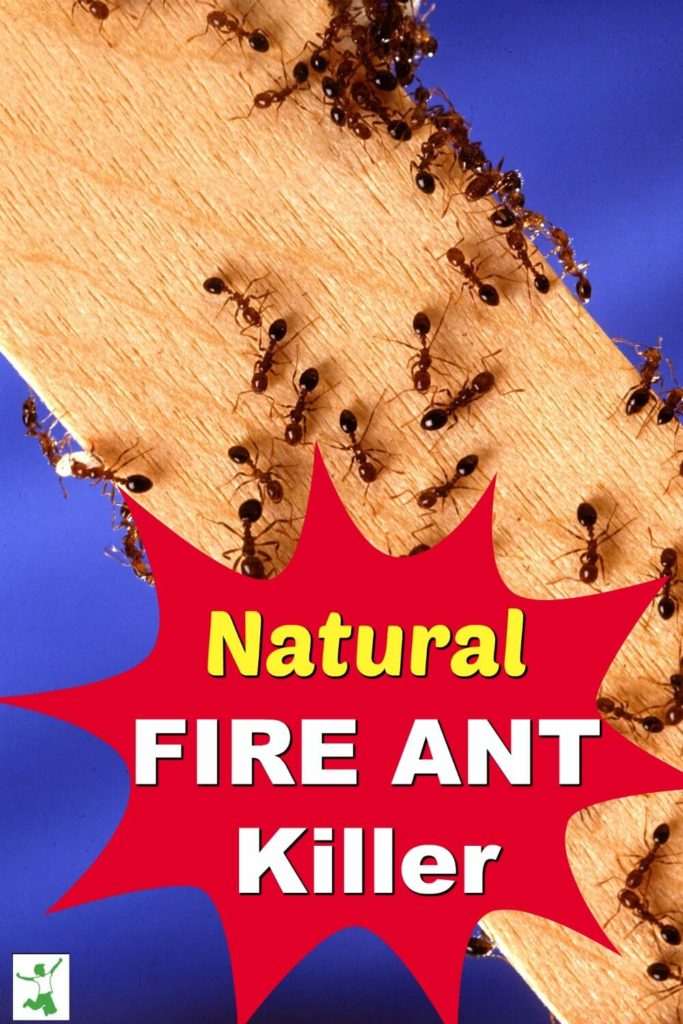
If there is anything that makes me cringe and shake my head in disbelief, it’s seeing school and community officials (or parents!) sprinkling toxic fire ant killer on lawns, playgrounds and other recreational areas.
Seriously?
Why would you EVER sprinkle poison where children run and play, kicking up pesticide-laden dust to breathe, track into the house, get on their skin and otherwise absorb into their growing bodies? You don’t necessarily have to eat a chemical to experience significant and negative biological exposure. Toxic pesticide powder and granules have no business being sprinkled anywhere near areas where children will be playing! Even adults would be well advised to steer clear.
Unfortunately, our modern society seems obsessed with convenience and quick fixes, rarely taking the time to stop and think about the long term consequences of a given action or activity.
If the stuff is sold at Home Depot or used on school playgrounds, it must be safe, right?
Wrong.
Let’s take a look at the active ingredient of the most popular fire ant killer brands on the market: Hydramethylnon.
Conveniently, the other 99% of the ingredients are unlabeled for these products.
Hydramethylnon is an organic compound commonly used as an insecticide for cockroaches and ants. It is in many popular brands of fire ant killer including Amdro, Combat, Blatex, Cyaforce, Cyclon, Faslane, Grant’s, Impact, Matox, Maxforce, Pyramdron, Siege, and Wipeout.
Hydramethylnon Dangers
According to the National Pesticide Information Center, the EPA has classified hydramethylnon as a possible (group C) human carcinogen due to the development of tumors of the uterus, adrenals, and lungs in rats. This classification means that, although hydramethylnon has been shown to cause cancer in one strain or sex of a laboratory animal, there is inadequate or no evidence that it may cause cancer in humans.
Besides the development of cancerous tumors, here are some of the negative reproductive effects when rats were exposed to hydramethylnon which is commonly found as the active ingredient in commercial fire ant killer:
- Male rats dosed with 200 and 400 ppm hydramethylnon over the course of two generations were less inclined to mate, and evidence of testicular degeneration occurred at all but the lowest dose. Hydramethylnon primarily affects the testes. Rats exposed to high levels of hydramethylnon may have prostate atrophy, testicular degeneration, and germ cell damage. Exposures of this magnitude may also result in small, soft testes of reduced weight.
- Fewer females became pregnant with implantation rates reduced.
The Fluoride Action Network Pesticide Project lists hydramethylnon as a possible human carcinogen and endocrine disruptor with the potential to be an environmental contributor to the development of cancer.
Organs affected include:
- Kidney
- Blood
- Bone
- Lungs
- Adrenals
- Testicles
- Thymus Glank
- Uterus
Opt-out of Pesticide-Based Red Ant Bait
While the EPA, local school administrators, and your local hardware store seem to think this stuff is harmless, as a mother attempting to raise healthy children who hope to have grandchildren one day, I will opt out, thank you very much.
Natural Fire Ant Killer That Works!
What is even more shocking than the liberal and mindless use of insecticides for fire ant eradication purposes is that these critters are so easy and cheap to control naturally!
And, when I say cheap, I mean it. How does free sound to you?
Here’s how I have controlled fire ants for the over two decades I’ve lived on our property in Central Florida, a place notorious for intractable fire ant problems.
I simply heat up a tea kettle full of boiling water and slowly pour it down the hole in the fire ant mound. That’s it! You don’t even need ant bait!
Not only will you kill the queen (she can’t get away quick enough from the boiling water coursing through the mound), but you pretty much kill every single ant in the mound as well.
Sometimes you will need a repeat treatment within a day or two, but usually, a single tea kettle full of boiling water will do the trick to eliminate even a large, thriving mound of fire ants.
The key is to make sure the ants on and around the mound are completely relaxed and undisturbed before you start pouring in the boiling water. If they are upset or anxious in any way, the queen will be long gone by the time you start the treatment.
Walking up slowly and quietly to the mound is the way to go. Don’t do this after your kids have been playing in the yard for a while, as the ants will already be quite distressed from the commotion.
Early morning works very well for this natural fire ant treatment in my experience.
Below is a video I filmed of me getting rid of a fire ant mound right near our driveway. Take a look and see if this method of fire ant removal might work for you too. It’s certainly worth a shot.
For those of you who may ask why I don’t use diatomaceous earth (source), the reason is simple. DE doesn’t work very well for fire ants in my experience.
You will feel good knowing that your children run and play in a yard around your home that is completely chemical free with nothing that can harm them … only help their immunity with exposure to good, “clean”, probiotic-filled dirt untainted by health disrupting pesticides.
More Information on Controlling Pests
Natural Carpenter Ants Removal
Steps to Remove a Tick Safely and Easily
Nontoxic Pest Control Ideas that Work
Bed Bug Removal Techniques
Fast and Effective Fly Repellent
Attracting and Using Ladybugs for Garden Pest Control
How to Resolve a Flea Infestation Naturally
Quick and Easy Homemade Fly Trap
Spider Repellent Guaranteed to Work
Fast Acting Mosquito Bite Remedy That’s Probably Already in Your Kitchen









Oh, my…boiling water, two kettles just to make sure I used enough and dead red headed, black bodied fire ants (called army ants by many) were on the surface of the mound a short bit later! Eureka! went my thoughts, “success!!!!” Woo hoo!!! Three mounds in two days, barely any foraging survivors left. After pouring on the water, I watched a while and three or four, I lost track due to my excitement over their annihilation, winged breeders began appearing about mid-height of the nest and, on the top, one ant had a whitish thing it was carrying but I got the flyers and the carrier before they knew what to do. Oh, my…boiling water works. And, knowing it does, and wanting to find out how much of a nest it kills with one treatment, I researched and found that Texas A & M, something like that, tested boiling water and found that one treatment generally kills about 60% of a nest. I think two rounds of boiling water over two days time is a good idea, just to be sure the work of killing a nest is more thorough and you can walk through or sit around without so much worry. Thank you, Ms. Pope, without you, I never would have known how to destroy the dangerous ants and prevent a more serious situation from breaking out. A billion thanks, you’re wonderful!!!
I am going to give this a try. Nothing else has worked so, I will give this a go in the morning. Thank you for the video, and explaining in detail.
I, personally, would not pour boiling water ANY where near plants that I wanted to keep! Boiling water is also a very effective method of killing plants, “weeds”, grasses, etc. I know as I use this method to keep my driveway and sidewalk crevices clear.
I guess you don’t get to central Texas much then! The fire ants in my area will have multiple holes to go in and out of the main mound, and some larger colonies will even have one (or more) smaller “back door” mound(s) a short distance (1 to 2′) from the main one!!! Also, during our hot summers, the dry, scorched ground can crack, at which point I may no longer even be able to tell where the mounds are as they are no longer on the surface but somewhere in the cracks!!! Not sure how well the hot water method would work on mounds like these.
I’ve been trying the boiling water method for months. Large fire ant mounds go so far underground that it only kills those few near the top. (By the way, that area of fire ants shown in your video does not qualify as a “mound.” The one I’m dealing with now gets about 8 inches high and 8 feet long! I can pour several pots of boiling water down the entire thing and even wash away the dirt from the top of the mound, but by the next morning, it’s partly rebuilt. I repeat, repeat, repeat, repeat . . . and still, I have fire ants close to the house.
Hi
I made a mistake and poked holes in 6 fire ant hills at different times and poured boiling water. This seems to have sent them under ground and into my house. I do not know how to get rid of them in the house?
I have not had to deal with fire ants in the house. You can try my in house remedy for carpenter ants. It might work for fire ants too. https://www.thehealthyhomeeconomist.com/safely-get-rid-of-carpenter-ants-fast/
I have seen mounds with one hole in the center and seen also mounds with several holes. Today I poured hot water on one mound that had several small holes. After pouring kettleful water I saw 2 big holes underneath.
As mentioned in the article, you may need to re-treat several times to ensure you got the queen.
Hi Sarah, I believe your boiling water will work. I am going to try tomorrow morning. Those fire ants sting hard and are poisonous.
The mounds in my yard have dozens of holes. Do I need to pour water in all of them at the same time or will just pouring the water in one or two holes work? Do you use a teakettle full for each hole?
Not sure those are fire ants then. Mine have one hole.
Can you use in garden without damaging plants… we have some in our Herbs and vegetables and I don’t want to damage them
Just be very careful where you pour the hot water. Try to pour it right down the hole in the ant mound. Then you are likely to get the queen first try.